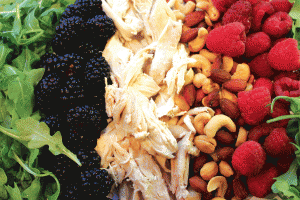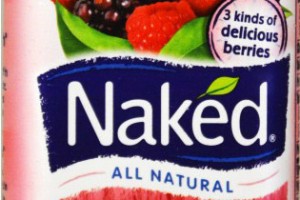Health-conscience students navigate the experiences of juice cleanses
The market for juices is saturated, but cleanser can also make their own juice with a juicer.
As a self-proclaimed “granola eater,” health food trends are nothing new to me. Since I was in fifth grade, I’ve slowly worked to eliminate animal products from my diet and replace them with healthier plant-based alternatives. Healthy eating is something fun for me––a challenge.
With the polluted world we live in, there are many toxins lurking in unexpected places. Despite healthy habits, there are many external forces such as chemicals, smog, or runoff, which can slow-down even the healthiest individual. One solution to this recurring issue is a cleanse, or a detoxification for the body. With their touted benefits of weight loss, purging, and magical healing powers, it seems like there’s not much that cleanses can’t do, but not all are created equal, especially for teens.
Many teens look to a cleanse as a quick fix for a more complex issue. If the body is a machine, the food is the fuel, and a cleanse is only a temporary fix, like a repair. Ultimately, it’s up to the individual to keep his/her body as clean as possible, and to do regular maintenance in the form of cleansing.
Personally, my motivation to cleanse was centered around this goal: I felt dragged down, exhausted, and overwhelmed at the beginning of school due to the environment change and was looking for a way to reboot my system––cleansing was the solution.
Juice cleanses are perhaps the most popular, ranging from a few days to weeks at a time. Anywhere from five to ten juices are consumed throughout the day (raw and unfiltered organic varieties are preferable), as well as the potential for some raw organic veggies to chew on. This is my cleanse of choice because of its unique ability to flush the system in such a condensed period of time. Junior Madi Mayer deduced that this was the best option for her, as well, after hearing about a few different varieties. “I decided to do an all vegetable juice cleanse for four days, with no food,” Mayer said.
Because of its difficulty, The challenge of all juice and no food should be done for a short period only: approximately three days, but a maximum of five. Participants should abstain from vigorous physical activity to avoid complications.
A more feasible and often healthier option for teens is modifying the aforementioned cleanse with a meal or two. These meals should accompany the juices and if possible be breakfast or lunch so the body has time to properly digest the food. Vegan meals are the most desirable, but if the body requires meat, then fish or chicken with Paleo restrictions are also good options. In my experience with this type, it takes longer to achieve the same results as only juice, but the same results can eventually be achieved through hard work and commitment.
It’s important to remember to allow your body time to adjust with the combination of food and juice, remembering that your body is susceptible, especially at a young age, to violent changes in diet. “If you eat a bunch, don’t decide to not eat the next day––ease into it,” Mayer said.
The key to successful cleansing is to listen to what the body is saying; if intense hunger is felt, the body is likely needing nutrition in the form of food. While on my cleanse, I felt quite a bit of hunger, but I was conscious of how hard to push my body. It’s okay to have a meal, even if the all juice cleanse is the goal, remember that not eating could result in long term damage. Always consult a doctor, or nutritionist, and a parent/guardian before beginning a cleanse––as a commitment, it’s important to make sure that the cleanse chosen is the right one for the individual, as well as having a prepared support system.
While on my cleanse, I wasn’t exactly pleasant to be around according to many around me, and I do admit that I may have been a little annoyed with those who were able to eat. Despite my struggles throughout the cleanse, it did turn out to be worth it in the end.
A healthy investment, but an expensive one, juice cleanses can cost anywhere from $30-$100 a day. The juice should be high quality to drain the body of any toxins, without adding any back in. One brand that’s great for cleansing is from Whole Foods, as well as Urban Remedy, but a great way to reduce the cost is to use a juicer rather than buying it from a store. While reducing the processing cost it also allows the process to be monitored, ensuring quality in the end product.
Every individual will experience different results––some may not have trouble at all while on it or notice no difference after––it varies greatly between individuals. “During my cleanse I felt terrible, exhausted, hungry, and brittle. But it was all worth it, because after I felt refreshed, and cleansed,” Mayer said.
I echoed many of the same feelings as Madi, but like her, I also felt very accomplished––my body had a renewed vibrancy which I hadn’t ever experienced.
When done correctly a cleanse can give a boost to a dreary diet of processed foods, the extra motivation to start eating healthy, or even an attempt to kick that common cold. Plentiful in varieties, its important to match lifestyle and cleanse to help harmonize results, and help flush your worn out system.



















































